Author: Pia Ingström
The painter who wrote
6 October 2014 | Non-fiction, Reviews
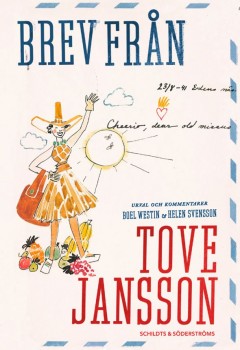 Brev från Tove Jansson
Brev från Tove Jansson
Urval och kommentarer Boel Westin & Helen Svensson
[Letters from Tove Jansson, selected and commented by Boel Westin & Helen Svensson]
Helsingfors: Schildts & Söderströms, 2014. 491 pp., ill.
ISBN 978-951-52-3408-7
€34.90
In Finnish (translated by Jaana Nikula):
Kirjeitä Tove Janssonilta
ISBN 978-951-52-3409-4
Nothing could be more mistaken than to describe Tove Jansson as ‘Moominmamma’. In her statements she was both cutting and complex – conflict-ridden and full of paradoxes. And she was nobody’s mamma.
Tove Jansson (1914–2001) became world famous (especially ‘big’ in Japan) with her Moomins – the characters of her illustrated books for children (1945–1970) – and her books for adults are a part of her work that is at least as interesting. Her training, ambition and artistic passion were, however, focused on painting.
Anyone who has read Boel Westin’s excellent biography – now available in English, Tove Jansson: Life, Art, Words – ‘knows’ all this, but to experience it through Jansson’s own letters, in an alternating process of reflection and recreation, brings the problems close to the reader in quite a different way: one that is shocking, but also deeply human. More…
Mad men
5 December 2013 | Non-fiction, Reviews
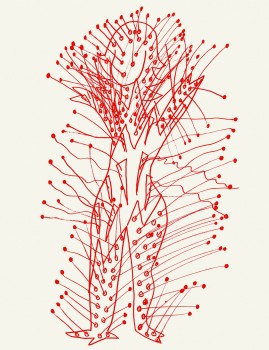
lllustration from the cover of Hulluuden historia
Hulluuden historia
[A history of madness]
Helsinki: Gaudeamus, 2013. 456 pp.
ISBN 978-952-495-293-4
€39, hardback
The Hippocratic Oath’s principle, primum non nocere – ‘first, do no harm’ – has been particularly difficult to apply in practice for doctors who have devoted themselves to sicknesses of the soul.
The breaking with this principle is the first thing to strike the reader in Professor of Science and Ideas Petteri Pietikäinen’s book, Hulluuden historia, which is overflowing with ideas.
This could be due to the vast amount of information contained within the book, combined with its slightly chaotic structure. It skips between a chronological and thematic narratives, and the author’s own involvement in his text varies, meaning that the text itself swings between vigorously discursive, and something that is little more than a sluggish retelling. Taking in everything Pietikäinen wants to say is difficult; the reader inevitably begins to grope for exciting details, and there are of course plenty of those to be found.
The sad thing is that the development of mental health care has not advanced steadily at all from its dark and ignorant beginnings towards a brighter and more enlightened present. Setbacks, especially concerning patients’ safety, have been many. Even if we ignore centuries of exorcisms, abuse, and care in the form of incarceration, punishment, and physical punishment, the 20th century has a wealth of gruesome examples to offer. More…
Bombast and the sublime
17 January 2013 | Reviews
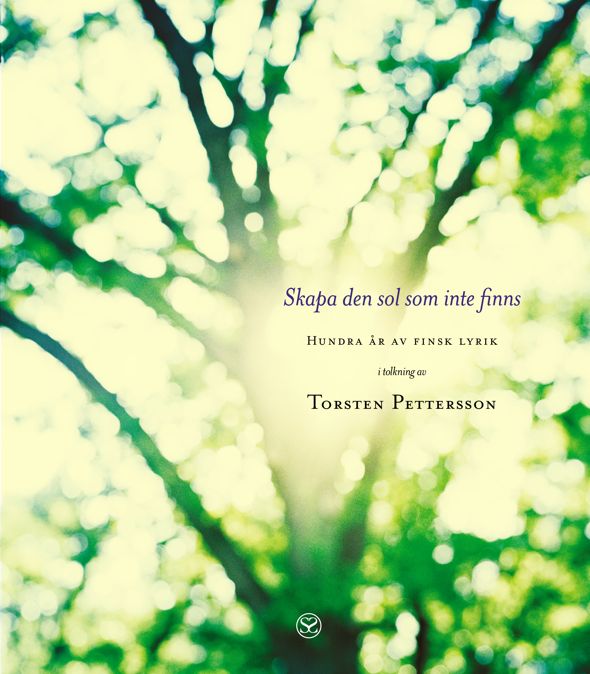 Torsten Pettersson
Torsten Pettersson
Skapa den sol som inte finns. Hundra år av finsk lyrik i tolkning av Torsten Pettersson
[Create the sun that is not there. A hundred years of Finnish poetry in Swedish translations by Torsten Pettersson]
Helsinki: Schildts & Söderströms, 2012. 299 p.
ISBN 978-951-52-3034-8
€25, paperback
In the 1960s my mother sometimes used to amuse herself and us children by reciting, in Finnish, in our bilingual family, selected lines of verse from the half-forgotten poetry canon of her school years.
Eino Leino (died 1926) and the great tubercular geniuses Saima Harmaja, Uuno Kailas, Katri Vala and Kaarlo Sarkia (all dead by 1945) were familiar names to me as a child. Early on, I realised that their poetry was both profoundly serious and also slightly silly, just because of its high-flown seriousness. More…
Robert Åsbacka: Samlaren [The collector]
30 November 2012 | Mini reviews, Reviews
 Samlaren
Samlaren
[The collector]
Helsingfors: Schildts & Söderströms, 2012. 191 p.
ISBN 978-951-52 3001-0
€22.50, hardback
Violence and darkness have always played an important role in the novels Robert Åsbacka (born 1961) writes, but up until now they have been accompanied by mitigating factors, tenderness, and warmer tones. His new novel is a dark story which goes deeper into the wound than any of the earlier novels. Tom, lonely boy and fatherless victim of bullying in a children’s world where adults neither see nor help, gets to know the young couple next door, Bo and Viola. Bo is friendly, Viola is nice and beautiful, and their life seems, for a while, to be the picture of a better future for a boy to grow up to, a life with a car, girlfriend, breathing room. But Åsbacka mercilessly reveals the grim truth about Bo and Viola; violence exists in the adult world too. In all its horror, Samlaren is one of the autumn’s best novels; the only comfort comes in the form of Åsbacka’s style, and well balanced and meticulous depictions. Åsbacka is careful in his choice of depictions, and he knows how to make sure the image remains etched into the reader’s memory.
Translated by Claire Dickenson
Sofi Oksanen: Kun kyyhkyset katosivat [When the doves disappeared]
9 October 2012 | Mini reviews, Reviews
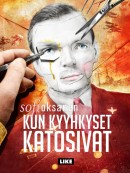 Kun kyyhkyset katosivat
Kun kyyhkyset katosivat
[When the doves disappeared]
Helsinki: Like, 2012. 365 p.
ISBN 978-952-01078-19
€ 27.90, hardback
Four years after the huge national and international success of her third novel Puhdistus (Purge, 2008, now translated into 38 languages), Sofi Oksanen has published a new novel to the accompaniment of trumpets and drums – a launch cruise to Tallinn, Estonia, workshops and public readings. The Finnish film version of Puhdistus received its world premiere at the same time. Oksanen has earned her star status as a writer, but Kun kyyhkyset katosivat is not as good as its predecessor. The story of Estonian freedom fighter (‘Forest Brother’) Roland and his cousin Edgar, an opportunist who manoeuvres his way through the Nazi and Soviet occupations of Estonia from 1941 until the apparent liberalisation of the 1960s, is thin and fragmentary. The language and style are uneven and diffuse, while Edgar’s chameleon-like shifts of identity from pro-German sympathies through Siberia to complicity with the KGB deserve to be more carefully explored. While the book’s themes are unquestionably authentic and relevant, they don’t really blend together into a moving novel in the way that Puhdistus does.
Translated by David McDuff
Monika Fagerholm: Lolauppochner [Lola upside down]
20 September 2012 | Mini reviews, Reviews
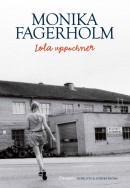 Lolauppochner
Lolauppochner
[Lola upside down]
Helsinki: Schildts & Söderströms, 2012. 461 p.
ISBN 978-951-52-2997-7
€ 31, hardback
Lola ylösalaisin
Suomentanut [Translated into Finnish by]: Liisa Ryömä
Helsinki: Teos, 2012. 300 p.
ISBN 978-951-851-480-3
€28.40, hardback
Lolauppochner (‘Lola upside down’) is a more authentic crime novel than the same author’s Den amerikanska flickan (English translation: The American Girl, 2004) and Glitterscenen (The Glitter Scene, 2009), though they too wove their dense fiction around an old crime. Readers who are at ease in Fagerholm’s luxuriant wordscapes with their tragic teens, country bumpkins and summer visitors will still be able to find their way around the small community where Jana Marton, a teenage girl on the way to her job at the local store, discovers the corpse of a boy, a key player among the local gilded youth. The novel’s opening, and many sections that follow, are extremely effective, with sharp and lightning-swift characterisations and a fine intuition for both the fear and the excitement in the social circle where the murder turns up hidden connections like worms from the soil. But the novel is too long for its own good – somewhere towards the end it ceases to gain depth, and the gallery of characters starts to feel too big. All the same, this book is a must for Fagerholm’s readership at home and abroad. A bonus for locals – and attentive outsiders – is present in the outlines of the small seaside town of Ekenäs that can be glimpsed behind the text. They supply a kind of physical magic that rubs off on much else besides – characters, moods and sense of place.
Translated by David McDuff
Getting by
18 May 2012 | Non-fiction, Reviews
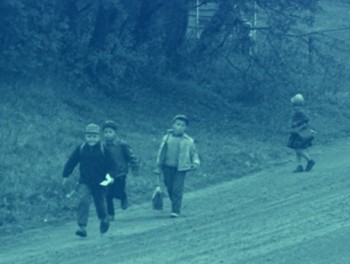
To school: children on the march – no buses or taxis in the Finnish countryside after the war. Photo: the cover of Kauaksi kotoa
Kauaksi kotoa. Muutoksen sukupolvi kertoo
[Far from home. Stories of the change generation]
Toim. [Ed. by] Anja Salokannel & Kaija Valkonen
Helsinki: Kirjapaja, 2012. 320 p.
ISBN 978-952-247-291-5
€32.90, hardback
The post-war period in Finland was a time of hope and reconstruction, of procreation and tough, grey heroism. Finland picked itself up by the bootstraps, as fathers who had been ‘driven mad in the war’, who took to drink or spat blood because they had shrapnel in their lungs, built veterans’ houses around the small towns and cleared fields in the backwoods. More than 83,000 men were killed in the wars (Winter War 1939–1940, Continuation War 1941–1944).
Mothers worked like men. The baby boomers – the demographic peak which consists of those born between the war years and 1950 (in 1946–1949 more than 100,000 babies were born each year, compared to some 60,000 in 2011) – had to be fed and clothed and educated for a better and more prosperous future.
Now the baby boomers have started to retire. Editors Anja Salokannel and Kaija Valkonen (baby boomers themselves) have compiled the book Kauaksi kotoa. Muutoksen sukupolvi kertoo (‘A long way from home. Stories of the change generation’), in which 21 men and women talk about their lives during the decades of change. More…
Heartstone
2 December 2010 | Reviews
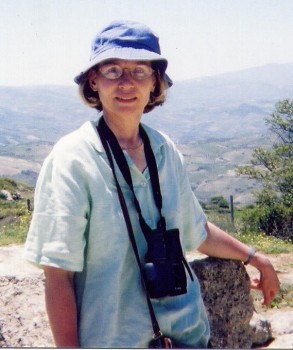
Ulla-Lena Lundberg
‘Knowledge enhances feeling’ is a motto that runs through the whole of Ulla-Lena Lundberg’s oeuvre – both her novels and her travel-writing, covering Åland, Siberia and Africa.
In her trilogy of maritime novels (Leo, Stora världen [‘The wide world’], Allt man kan önska sig [‘All you could wish for’], 1989–1995) she used the form of a family chronicle to depict the development of sea-faring on Åland over the course of a century or so. She gathered her material with historical and anthropological methodology and love of detail. The result was entirely a work of quality fiction, from the consciously old-fashioned rural realism of the first volume to the contradictory postmodern multiplicity of voices in the last – all of it in harmony with the times being depicted.
When Lundberg (born 1947) takes us underground or up onto cliff-faces in her new documentary book, Jägarens leende. Resor i hällkonstens rymd (‘Smile of the hunter. Travels in the space of rock art’), in order to consider cave- and rock-paintings in various parts of the world, she also reveals a little of the background to this attitude towards life that takes such delight in acquiring knowledge – an attitude that is familiar from many of the protagonists of her novels. More…
So close to me
19 August 2010 | Reviews
Please try this first, before we enter the chamber of horrors. It’s a poem by Timo Harju:
… The old people’s home is the strange hand of God with which he strokes
his thinning hair,
a sudden shower of cackling in the dry linen closet, slightly
sad and lonely
God looks out, stirring his cup of tea as if it were on fire.
If Jesus had lived to grow old and gone into an old people’s home,
he would have been like these.
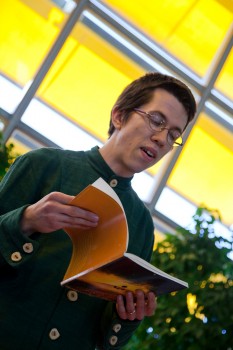
Timo Harju was awarded the 2009 Kritiikin kannukset prize (‘the spurs of criticism’, 2009) of the Finnish Critics' Association, SARV. Photo: Pia Pettersson
This spring a young Finnish female nurse was sentenced to life imprisonment for using insulin to murder a 79-year-old mentally retarded patient. Not long after, sentence was passed on another nurse – this time a meek and submissive-looking middle-aged woman who had murdered a whole series of elderly patients with overdoses of medication.
These are the terms – those of ordinary crime journalism – in which our recent public discussion of long-stay care of the elderly here in Finland was conducted. The discussion was followed by the usual misery of cuts, unchanged diapers, dehydration, over-medication, poor wages for hard work… No wonder that the concept of ‘healthcare wills’ and ‘living wills’, in which people are supposed to say how they want to be cared for in the last stage of their lives – is acquiring a disturbing undertone of ‘better jump before you’re pushed.’ More…
In a class of one’s own
18 December 2009 | Reviews
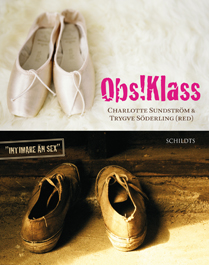 Obs! Klass
Obs! Klass
Red. [Ed. by] Charlotte Sundström & Trygve Söderling
Helsingfors: Schildts, 2009. 288 p.
ISBN 978-951-50-1891-5
€27, paperback
De andra. En bok om klass
Red. [Ed. by] Silja Hiidenheimo, Fredrik Lång, Tapani Ritamäki, Anna Rotkirch
Helsingfors: Söderströms, 2009. 288 p.
ISBN 978-951-522-665-5
€26.90, paperback
Me muut. Kirjoituksia yhteiskuntaluokista
Helsinki: Teos, 2009. 267 p.
ISBN 978-951-851-259-5
€27.90, paperback
At some time in their lives, all members of the Swedish-speaking minority in Finland have been confronted with the phrase ‘Swedish-speaking better people’ [Svenska talande bättre folk], uttered in tones of contempt. Encouraged by news and entertainment media with little regard for the consequences, Finland’s Finnish-speaking majority is hopelessly fascinated by the image of us Finland-Swedes as a uniform and monolithic haute bourgeoisie that resides in the coveted Helsinki neighbourhoods of Eira and Brunnsparken. More…
Monika Fagerholm: Glitterscenen [The Glitter Scene]
17 November 2009 | Mini reviews, Reviews
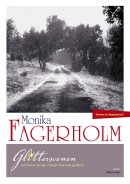 Glitterscenen
Glitterscenen
[The Glitter Scene]
Helsingfors: Söderströms, 2009. 407p.
ISBN 978-951-522-467-5
€29.90
Säihkenäyttämö
Finnish translation by Liisa Ryömä
Helsinki: Teos, 2009. 455 p.
ISBN 978-951-851-127-7
€29.90, hardback
In Glitterscenen Fagerholm reveals the shabby details of the murder mystery that was the essence of her celebrated Den amerikanska flickan, The American Girl (2006). In a sense, the two books are psychological thrillers, but they are also much more than that: the American girl’s death is a myth about destruction and creation – a narrative about love, death and glamour that attracts and seduces cohort after cohort of young women in the District, a place somewhere in Finland that is in the process of being transformed from the rural to the suburban. Like no other author, Fagerholm combines the advantages of plot-based realism with the deep psychological excavation of collective dreams and the secret layers of the unconscious. In the centre of the District there is a kiosk where the local priest’s daughter, fat May-Gun, presides over dirty magazines, sickly candy and magnificent dreams. Across the square, eyed by horny small-town greasers, walks young and blonde Suzette. The result is a deadly drama, propelled by grief and narcissism. The Glitter Scene is the goal of our dreams, but also a dangerous place of instant gratification and sudden death.
Katri Lipson: Kosmonautti [The cosmonaut]
30 December 2008 | Mini reviews
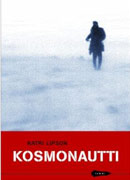 Kosmonautti
Kosmonautti
[The cosmonaut]
Helsinki: Tammi, 2008. 199 p.
ISBN 978-9513-142940
€ 22.50, hardback
Kosmonautti is a reflective first novel by a mature author; Lipson (born 1965), a medical doctor, has succeeded in weeding out the non-essential. In a cold, dark Murmansk during the final decade of the Soviet Union, three people live out their dreams. Seryozha is the good boy who adores space travel and his beautiful music teacher, Svetlana Kovalevna. She is harassed both in the classroom and in the staffroom, and by her snooping neighbours in the communal apartment. More…

